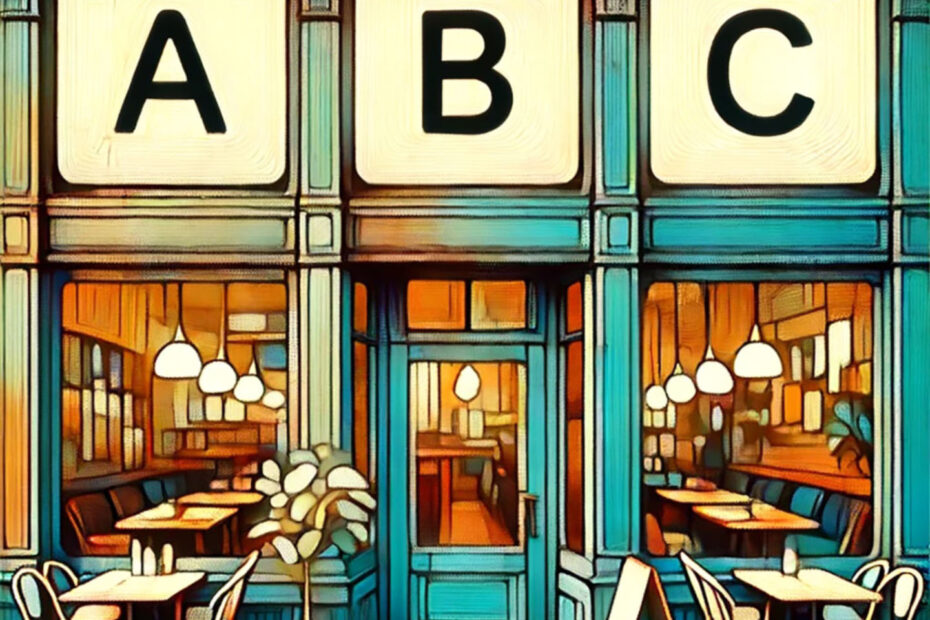From New York to California, you’ve probably seen them hanging in restaurant windows yourself. Plain cards denoting a restaurant’s compliance (and supposed cleanliness in the mind’s eye of a customer) with local law. If you’ve watched this year’s finale of Curb Your Enthusiasm, you might well be having you’re very own Larry David moment. Why no letters? Where are the letters? The letters! I need the letters!
The answer to why Utah lacks this system is surprisingly satisfying, and for once, in an often head-scratching Beehive – makes complete sense. To get to the bottom of the matter I recently spoke to Jeff Oaks, Bureau Manager at Salt Lake County Health Department.
First, though, let’s quickly recap how the process for inspection works here in Utah. Any establishment in the state offering food or drink can expect anywhere from one to three visits per year from their respective county health department. The frequency is dictated by the perceived risk of the food and drink offering; a coffee shop without refrigerated products is considered a lesser risk to consumers, than a restaurant handling a more delicate product, sushi for example.
As you might expect, visits by health inspectors are made without announcement. In talking to Oaks though, the veteran inspector is keen to stress the department isn’t looking to catch businesses flat-footed. “Many of us, myself included, have worked extensively in the industry. We understand the day-to-day challenges business owners encounter. We know that dropping by during a lunch rush – well, the environment might not be the perfect pristine moment in time.”
Following an inspection, comes the rating part. Oaks goes on, “Like other states, here in Utah we use a system where each violation comes with a points-based penalty, reflecting the severity of the infraction. One, three, or six points can be handed out for each failure during an inspection. The larger point penalties are given for serious failures of safety. After the inspection, the total points are tallied up – the lower the overall score the better.” So far so simple, but it’s here that Utah diverges from other states, avoiding potentially misleading glance and go gradings.
As Oaks explained to me, “Violations are not all equal in their potential hazard to diners. Assigning letter grades based on a cumulative total can be very misleading to the public.”
To illustrate Oak’s point, imagine two hypothetical restaurants. We’ll call them Bob’s and Bill’s. Bob’s might have accumulated 20 points during a routine inspection, all borne from minor one-point infractions; a cracked tile here, a light lacking preceise lumen levels there. Meanwhile, over at Bill’s, a seemingly better score of 18 points was doled out solely from six-point violations – more dangerous infractions such as raw meats held at the wrong temperature, or pest infestation run wild.
Under a simpler ABC grading system, rankings are typically delineated by point thresholds – Bob might be graded with a B for his efforts, while Bill could receive an A. Such oversimplification though provides a false sense of security for consumers; after all in our above example, Bob is merely struggling to maintain an older building, while Bill is turning a blind eye to rampant roaches and raw sewage. Where would you want to eat? The devil, as they say, is always in the detail, which is where Utah’s system is particularly advantageous.
“We feel it’s important to offer consumers an insight into this level of granularity”, explains Oaks. “It’s why we operate a QR code-based lookup system where every restaurant’s inspection data can be reviewed on demand and in detail.” Per Oaks info, the next time you enter a restaurant, take a look around. The establishment’s food permit should be displayed. Per 4.1.2 of Salt Lake County Health Regulation (yes I am a stickler for these types of things):
“upon acceptance of a permit issued by the Department, the permit holder shall: (i) Post the permit in the establishment’s primary entrance, window or door, such that it is visible from outside the establishment;”
Remember, that’s the law folks. Emblazoned on the permit you should also find a scannable QR code leading directly to the business’s last inspection report.
It should be noted that the system isn’t yet perfect, but changes are coming. Expect a mobile-friendly system to debut later in the year. In the meantime, feel free to head to the SLCoHD website here. Every one of Salt Lake County’s 5,000+ inspected establishments is listed in detail.
Image credit, ChatGPT/Dall-E.
Purchase a subscription
Subscribe to our paid newsletter for $5 and help keep our stories free of automated advertising
Subscribe NowOther useful links
- Free newsletter – signup and receive our weekly newsletter for free
- Food talk group – chew the fat with other like-minded Utah foodies over on Facebook.
- Best of SLC 2024 – what you can’t miss in the Beehive right now.

Hi, I’m Stuart, nice to meet you! I’m the founder, writer and wrangler at Gastronomic SLC. I’m a multiple-award winning journalist and have written in myopic detail about the Salt Lake City dining scene for the better part of seventeen years.
I’ve worked extensively with multiple local publications from Visit Salt Lake to Salt Lake Magazine, not least helped to consult on national TV. Pause those credits, yep, that’s me! I’m also a former restaurant critic of more than five years, working for the Salt Lake Tribune. I’m largely fueled by a critical obsession with rice, alliteration and the use of big words I don’t understand. What they’re saying about me: “Not inaccurate”, “I thought he was older”, “I don’t share his feelings”.
Want to know more? This is why I am the way I am.
This article may contain content provided by one of our paid partners. These are some of the best businesses in Utah. For a list of all our current and past relationships see our partnership history page.

I lived in Reno years ago. On a weekly basis, the newspaper published not only the point total (iirc it was based on 100 points to start, with deductions for infractions) but also a description of each deduction. A reader could understand the detail and over time get a very good understanding of which infractions were more serious.
Though I have never worked in the food industry, I gained a real appreciation for what it took to run a clean and successful restaurant.